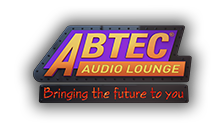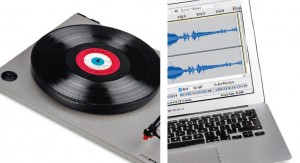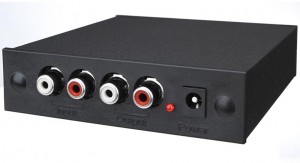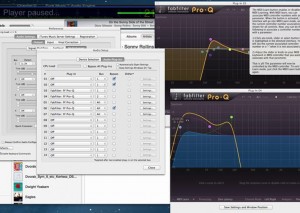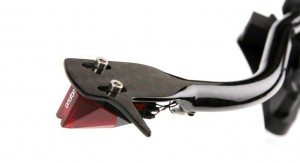They might not be cutting-edge tech, but for their look and feel – not to mention an exquisitely fluid analogue sound – you can’t beat vinyl. The only thing your record collection lacks is portability, but there is one way to take those LPs with you wherever you go…
We love records. We adore almost everything about them – their look, their feel, the large-scale cover art and easily readable sleeve notes. Most of all, we can’t get enough of their wonderfully fluid analogue sound. There’s just something about an immaculate record played back on a good record player that even the best of digital still struggles to match, let alone better.
But in many situations – whether it’s listening to your iPhone or computer, or if you’ve made a move towards streaming – records just won’t do.
There is always the option of buying the music again in file form (and some vinyl reissues come with download codes), but if you’ve already bought it once, the idea of paying for the same music again may not appeal. It’s also possible that older recordings may not have made the transition to digital anyway. That’s when turning your vinyl records into digital files becomes essential.
But don’t expect ripping your vinyl to be quite as fuss-free as making a copy of your CDs. It isn’t. CDs are easy. Pop them into the disc drive of your computer and rip away. Records require a bit more work – but the results are worth it.
What do you need?
If you have a turntable, the best option is to buy a USB phono stage, such as the Rega fono mini A2D
There are numerous hardware configurations, but the basic building blocks are: a turntable (of course), a phono stage, an analogue-to-digital converter with USB output, and a computer with suitable recording software.
It seems complex, but the system can be simplified. There are many turntables on the market with a phono stage, analogue-to-digital converter and USB output built-in. Usually referred to as USB turntables, these are a convenient way to get music on vinyl into your computer.
The downside is that most tend to be at the budget end of the market and concentrate merely on getting the job done rather than doing it particularly well. Simply put, your recordings won’t necessarily reflect the quality of sound possible from your records. The new Sony PS-HX100 vinyl-ripping deck will do its best to change that.
If you already have a turntable, the best option is to buy a decent USB phono stage. We like the £90 Rega Fono Mini A2D and there are decent affordable alternatives from the likes of Pro-Ject too. Such units pack phono stage, analogue-to-digital converter and USB output in one neat box.
Recording software
Channel D’s Pure Vinyl recording software is at the top end of the market, but offers a great deal of flexibility
Assuming you have a computer, you need some recording software. There are many on the market, some specifically designed for recording vinyl. Channel D’s Pure Vinyl comes in at the top end and offers a great deal of flexibility.
It features built-in phono equalisation, for example, so you can feed the turntable’s output straight into the computer without needing a phono stage in the signal path. There are also powerful editing functions to help optimise the recording. It’s great, but the downside is a price of around £250 – although a free 15-day trial offer is available.
A more affordable alternative is VinylStudio. This includes many of the features of Pure Vinyl, including built-in RIAA equalisation, but costs just $30 (around £20).
For many people, even this may be a step too far. If that’s the case, we recommend Audacity software. It’s free and does a good enough job. At first the interface looks pretty complicated, and some of the editing functions take a while to figure out, but spend some time getting familiar with it and it works well.
Patience will be rewarded
Check your set-up before you start. Make sure it’s sitting level and the cartridge is free of fluff – it can make a difference
Before you start recording, make sure your deck is working optimally. If you haven’t checked your turntable set-up for a while it’s worth doing so. Little things such as whether it’s sitting level or that there’s enough oil in the main bearing can make all the difference to the performance. Check your cartridge too. Is the tip free of fluff? Are the tracking force and bias adjusted correctly? These simple things can help produce a better-sounding recording.
In stark contrast to the few seconds that ripping a typical track from CD takes, vinyl can only be recorded in real time. If a song lasts five minutes, that’s how long it will take to record. So take your time. Make sure the player isn’t jogged during the recording, and keep the playback volume low to reduce any degradation of sound caused by feedback from the speakers.
Also make sure your records are spotless and dust-free. Ideally, they would be brand new and unused straight from the sleeve, but we understand that’s not practical in most cases. Remember: any hisses, clicks and pops will be recorded along with the music.
While such sounds may – if they’re not too excessive – add character to vinyl playback, people tend to be less forgiving of such noises from a digital source. You can buy software to edit such sounds but it’s a time-consuming process, and if you’ve been overzealous all that additional processing may spoil the recording.
All in the details
You’ll need a three-part system with record player, analogue-to-digital converter and computer with software
What format should you record in? Storage is affordable so we’d be tempted to go down the high-resolution route. 24-bit/96kHz is the norm for many studios and seems a good compromise between quality and memory space used. WAV, AIFF or FLAC? It doesn’t really matter so much as long as the kit you normally use is compatible.
CD music or music files usually have metadata built in. In the case of music files this includes album art plus track information. Records don’t have this, so the information has to be entered in manually. The process is fairly tedious, especially if you’ve recorded a large quantity of music, but it’s essential to make it easy to locate tracks once they’re in your computer’s music folder.
Your computer won’t recognise individual tracks, so you’ll have to stop recording when you’ve finished recording each one. Tracks that flow into each other are an issue too. Mark these for gapless playback or you’ll have a few seconds of silence where there shouldn’t be.
Once you’re done, it would be a right pain if a computer or NAS malfunction caused the data to be corrupted or lost. Ensure you have at least one back-up of your digital music library, two is even better. After going to all that effort to record your vinyl, it would be a shame if you had to do it all again.
And the final stage? Sit back and enjoy
http://www.whathifi.com/advice/how-to-digitise-your-vinyl-collection#XlGKC5ZSliaJzpzZ.99
